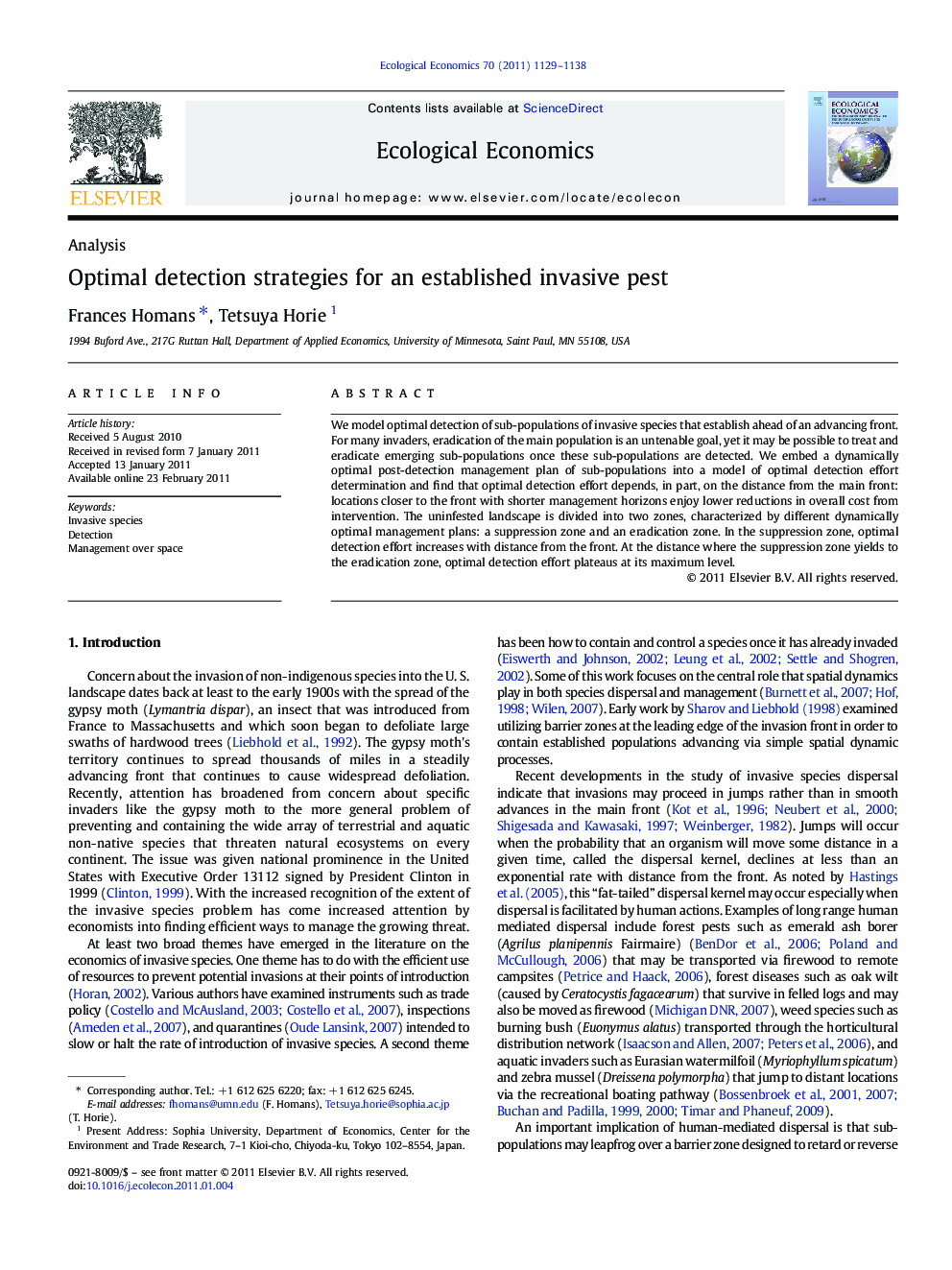| Article ID | Journal | Published Year | Pages | File Type |
|---|---|---|---|---|
| 5050693 | Ecological Economics | 2011 | 10 Pages |
We model optimal detection of sub-populations of invasive species that establish ahead of an advancing front. For many invaders, eradication of the main population is an untenable goal, yet it may be possible to treat and eradicate emerging sub-populations once these sub-populations are detected. We embed a dynamically optimal post-detection management plan of sub-populations into a model of optimal detection effort determination and find that optimal detection effort depends, in part, on the distance from the main front: locations closer to the front with shorter management horizons enjoy lower reductions in overall cost from intervention. The uninfested landscape is divided into two zones, characterized by different dynamically optimal management plans: a suppression zone and an eradication zone. In the suppression zone, optimal detection effort increases with distance from the front. At the distance where the suppression zone yields to the eradication zone, optimal detection effort plateaus at its maximum level.
Research Highlights⺠We model detection of sub-populations of invasives ahead of an advancing front. ⺠Optimal detection effort depends, in part, on the distance from the main front. ⺠The uninfested landscape has a suppression zone and an eradication zone. ⺠In the suppression zone, optimal detection increases with distance from the front. ⺠In the eradication zone, optimal detection effort plateaus at its maximum level.
